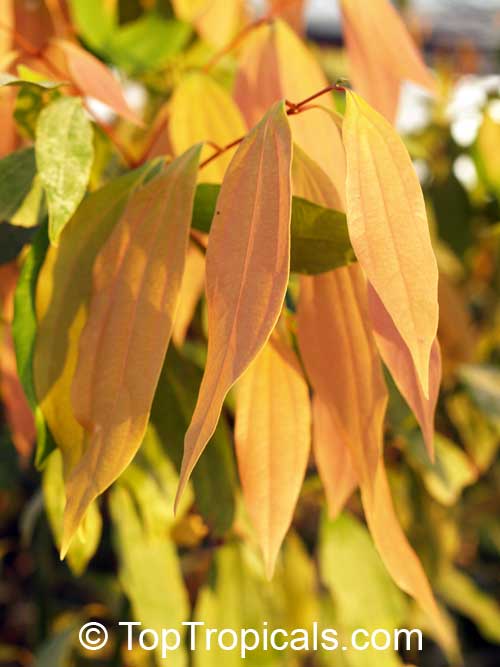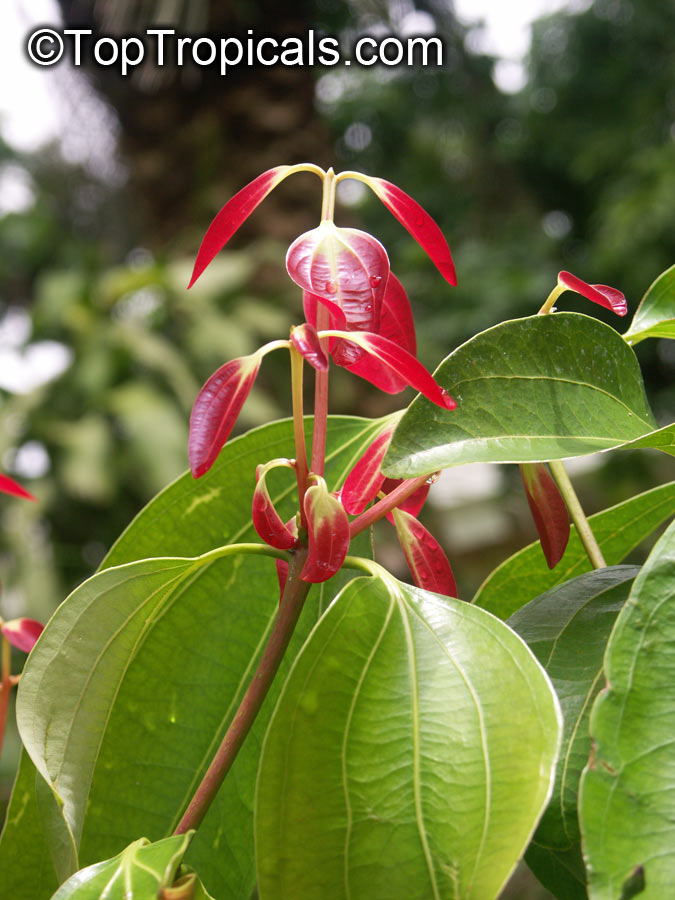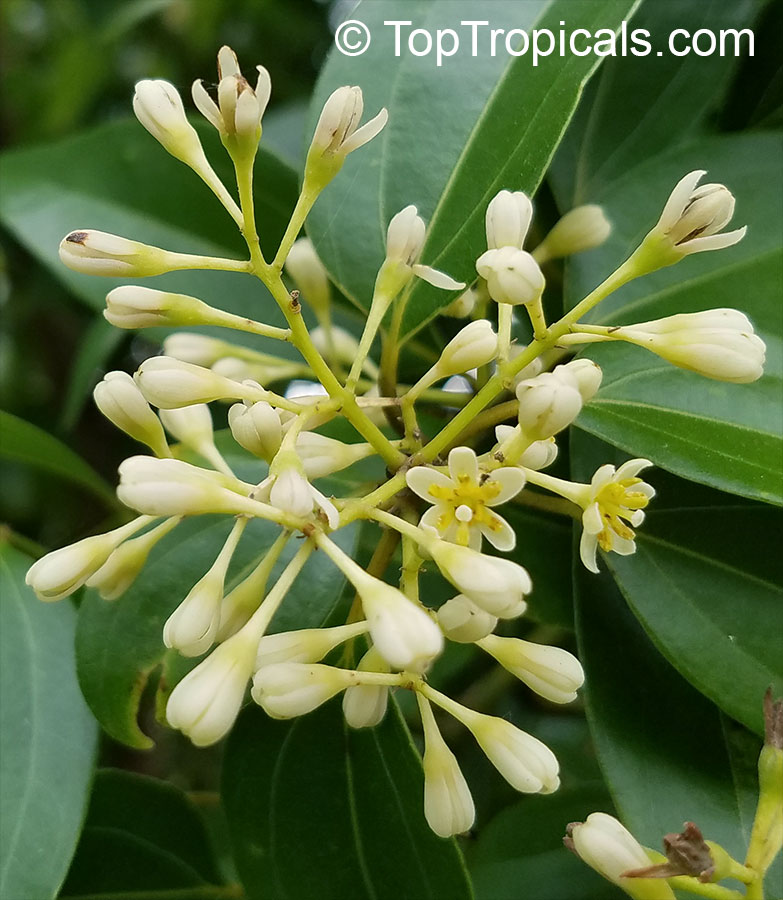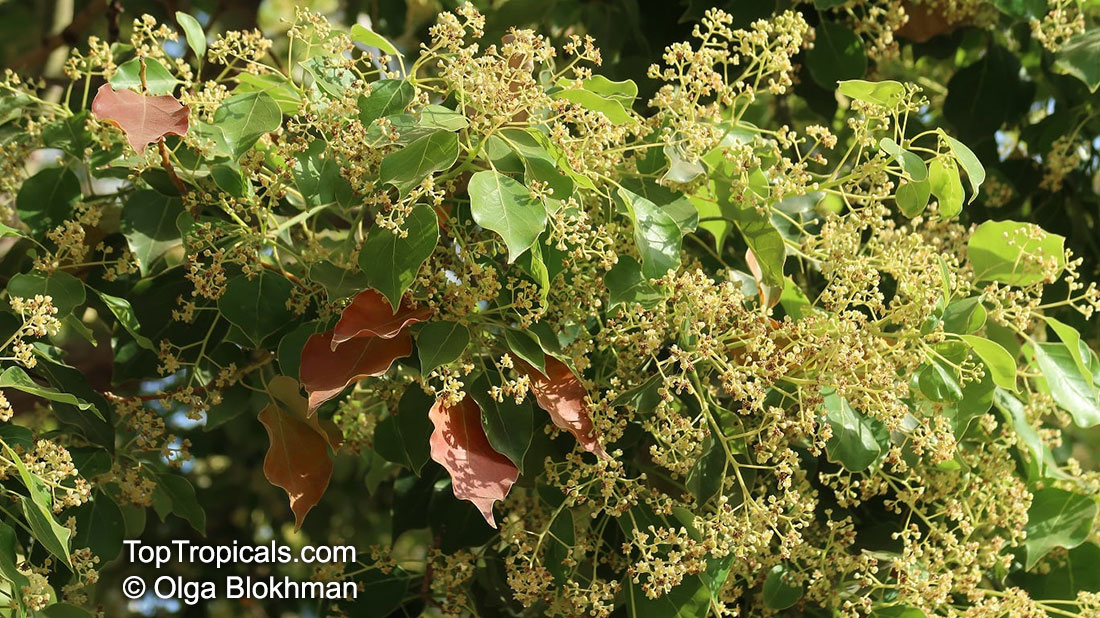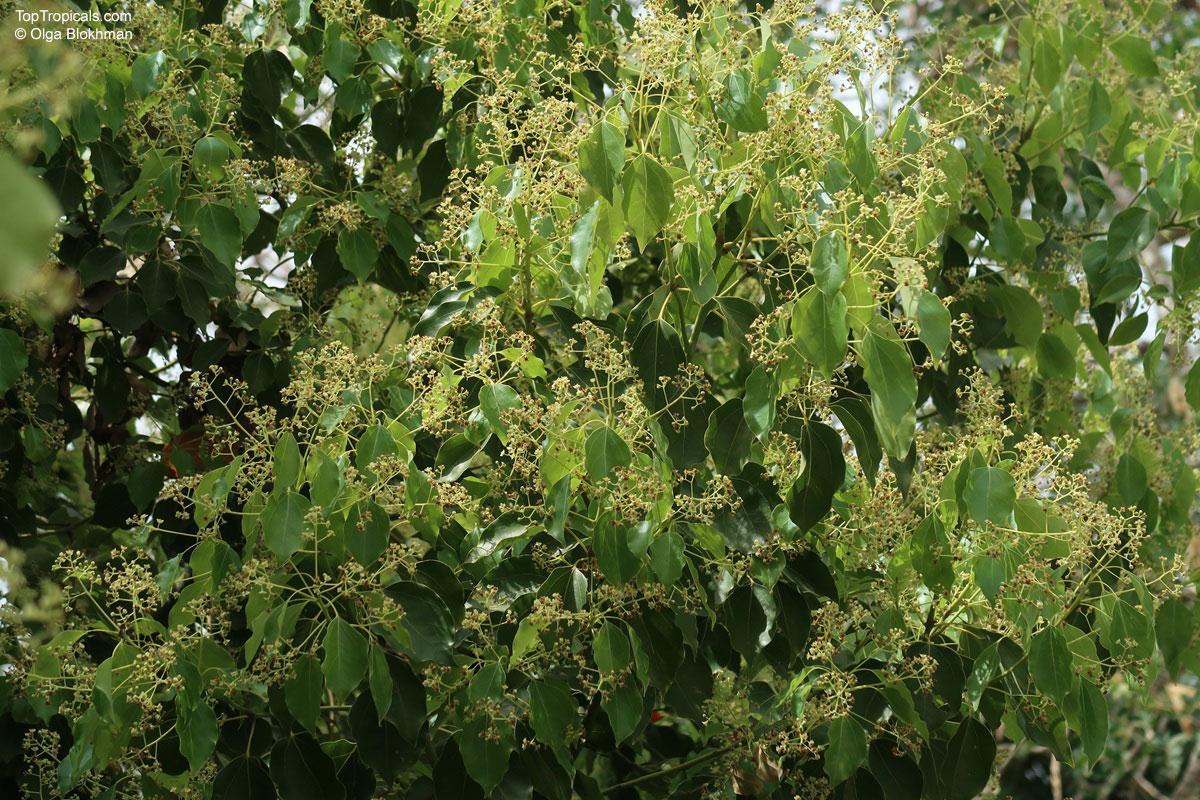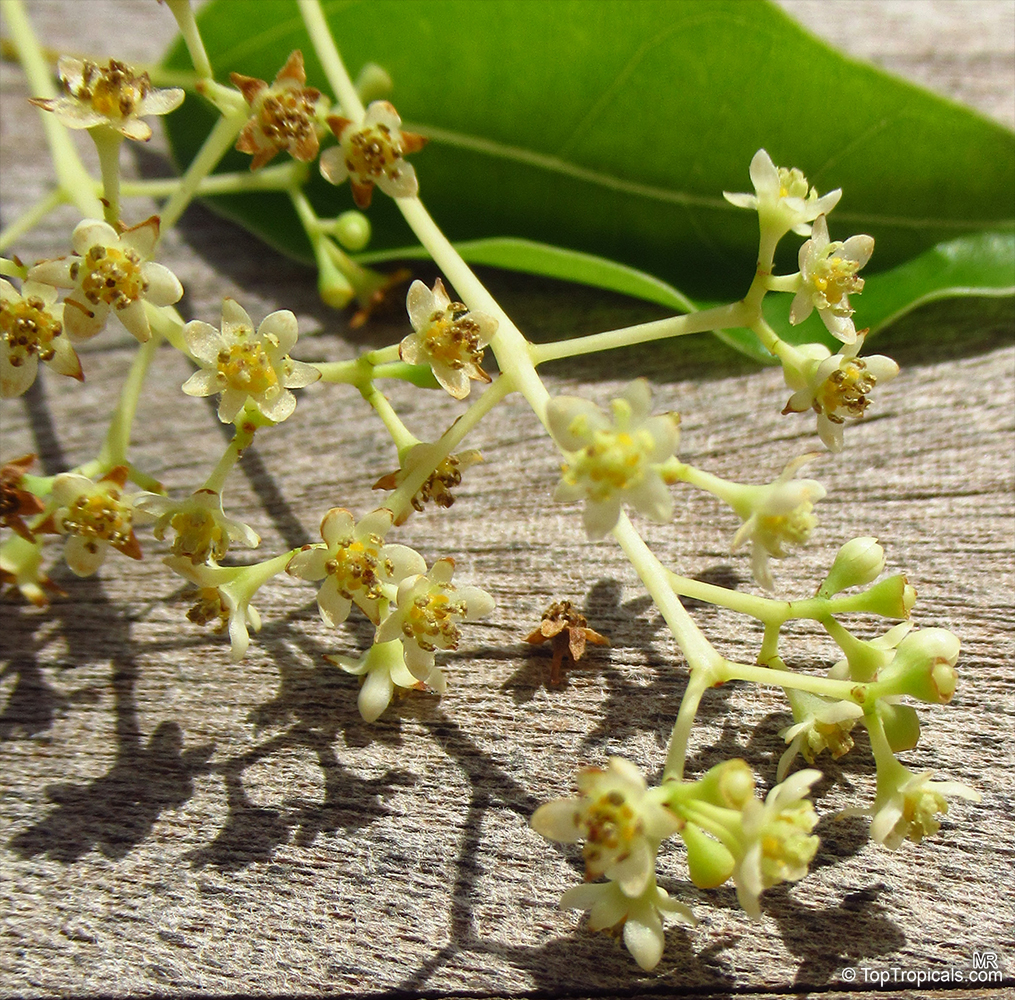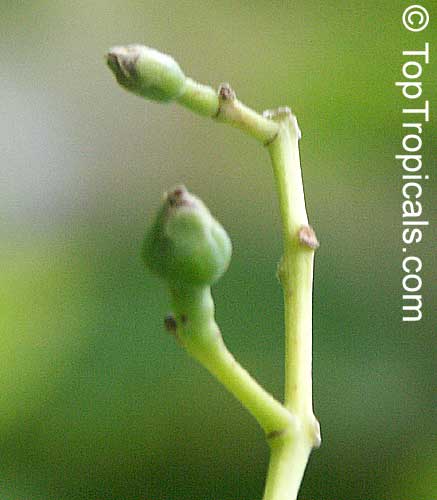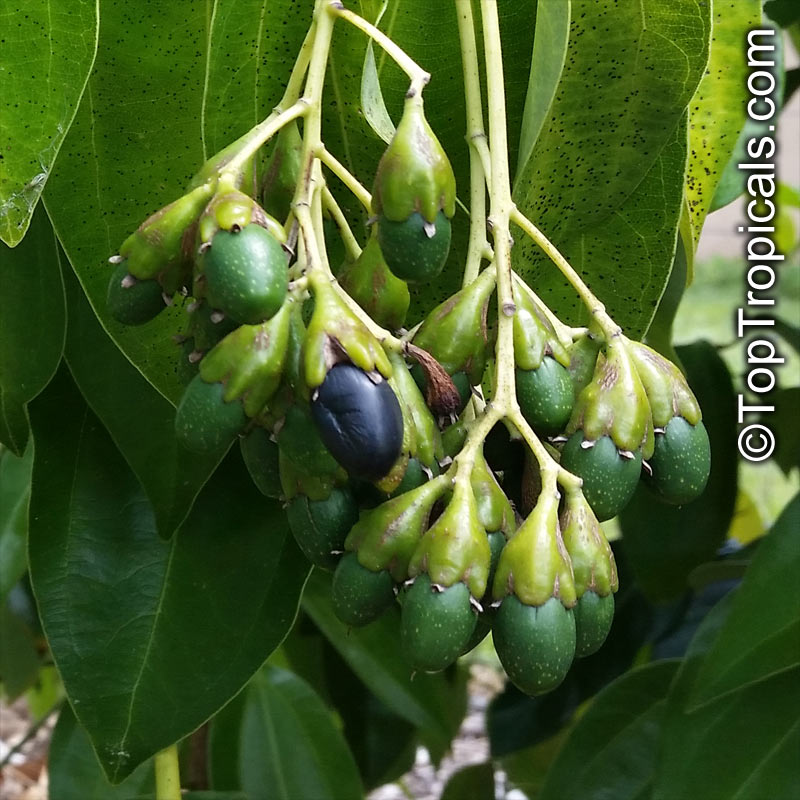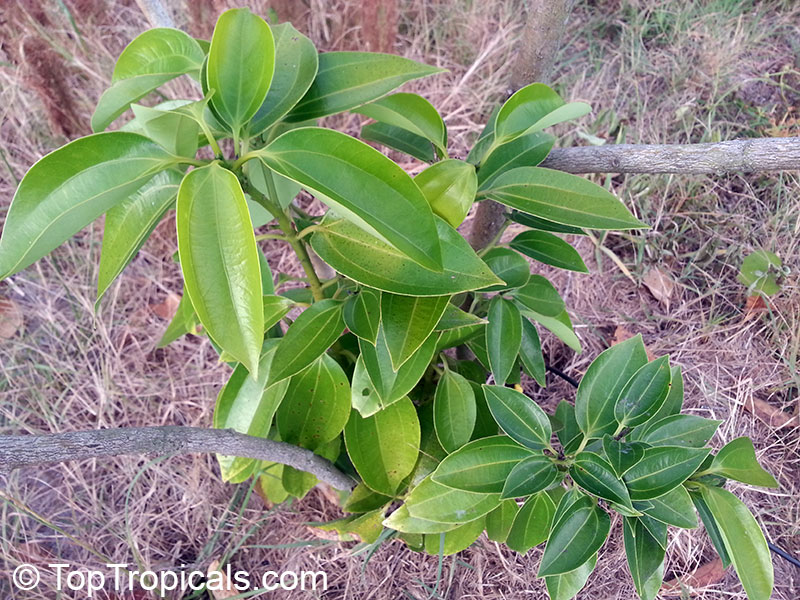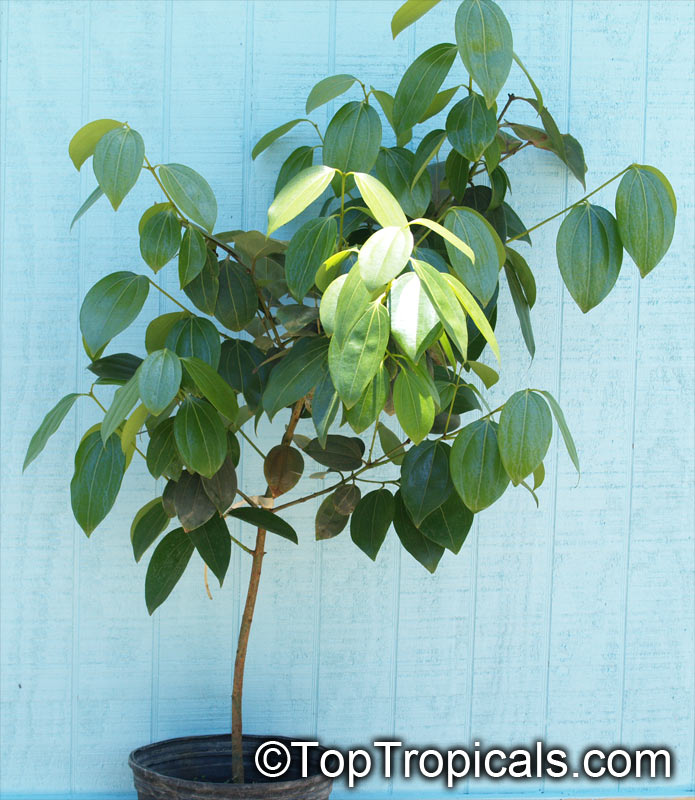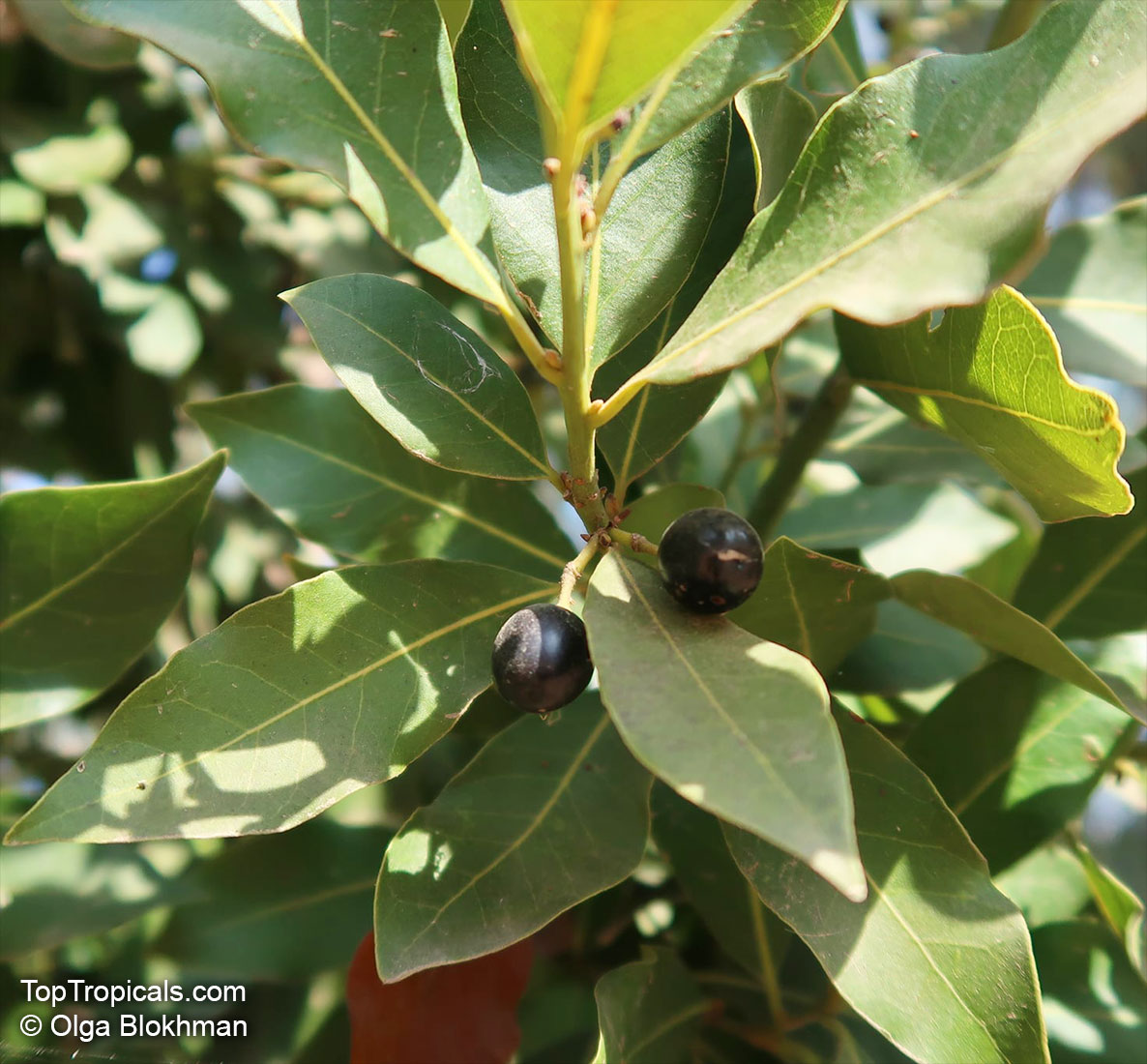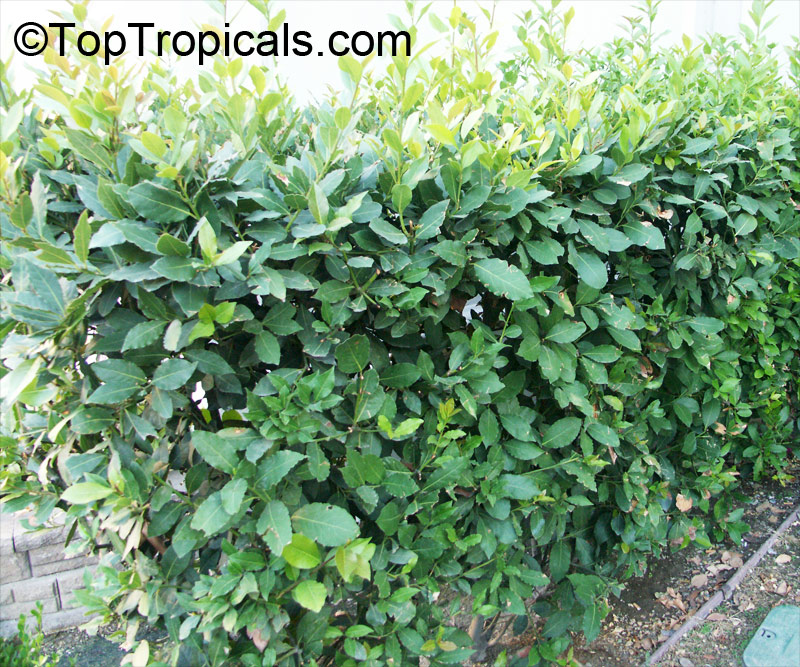Lauraceae - Botanical Family
| Number of plants found: 16 | Next | 
|
Go to page: | 1 | 2 |
Botanical names: Cinnamomum aromaticum, Cinnamomum cassia
Common names: Cassia cinnamon, Chinese cinnamon
Family: Lauraceae
Origin: Sri Lanka, Thailand










This variety of cinnamon has large 10"-12" long leaves which are highly aromatic as much as bark that is used for commercial cinnamon. Cinnamon is an evergreen shrub or small tree with dark, leathery, aromatic, veined leaves, numerous inconspicuous yellow flowers and blackish berries. In cultivation young trees are cut back twice a year and sucker shoots develop from the roots. These long slender shoots furnish the bark that is the commercial product. Leaves are used as tea. Cinnamon is a very popular culinary spice and is also used in candy, gum, incense, toothpaste and perfumes. The oil is used in medicine as a carminative, antiseptic and astringent and source of cinnamon extract.
See article about Cinnamomum aromaticum
Botanical name: Cinnamomum camphora
Common names: Camphor Tree, Camphor Laurel
Family: Lauraceae
Origin: China, Japan
Hardiness: 15°F







This is an exotic tree that has been widely cultivated for more than a century as a shade and ornamental tree in Florida and elsewhere. This is the aromatic tree from which camphor was derived (used in medicines and mothballs), until camphor oil began to be made artificially in the 1920s. The camphor quickly grows into a good-looking shade tree which is frequented by berry-eating birds. The camphor tree is a broad-leaved evergreen that is often twice as wide as it is tall. It grows to 50 to 100 feet tall. Where trees are present, the ground is often well-populated with camphor seedlings or small trees; of course this is when they are easiest to control. A quick way to identify camphor is to crush some leaves in order to smell the pungent camphor odor. Camphor trees are densely covered with shiny oval and elliptical leaves, up to 5 inches long. Young leaves are reddish. In spring, the tree grows 3 inch spikes of very small yellowish-white flowers, which are soon replaced by black pea-sized berries. Camphors grow either in full sun or light shade, and prefer well-drained, sandy soil.
Botanical name: Cinnamomum iners
Common name: Cinnamon
Family: Lauraceae
Origin: Thailand









Cinnamomum iners, also known as Cinnamon, is an evergreen plant native to Thailand and other parts of Southeast Asia. This large shrub or small tree grows 5-10 feet tall in ideal conditions and prefers full sun and regular watering, making it an ideal choice for warmer climates or temperate climates with enough consistently warm weather. In the US, it grows best in USDA hardiness zones 9-11, producing best when it receives ample sunlight and water.
The ornamental foliage of this plant is highly fragrant, making it a common choice as an ornamental and a popular choice for residential gardens and landscapes where its unique scent can be enjoyed. The cinnamon sweet aroma and delicate leaflets provide a beautiful texture to any garden.
Cinnamomum iners has ethnomedicinal uses and the inner bark of the tree is used to make teas for treating nausea, relieving fatigue, and for cardiotonic purposes. Not only is this not toxic, Cinnamomum iners is actually edible and the flowers, leaves, and fruits can be eaten. The berries that grow on this plant come in white and light violet, and are about 1-2 inches in diameter. While not renowned for being particularly flavor-packed, fruits of this plant are used as a source of vitamins and minerals and even as a flavorful additive to steamed rice.
Grown in containers, Cinnamomum iners is somewhat hardy and tolerant of moderate frosts. To bring the plant into bloom, however, plants growing in containers will need to be brought indoors and put in a warm, bright area when cold winter temperatures move in. When grown in the ground it can withstand temperatures of 30°F. In colder climates, taking plants indoors during active season and then re-planting them in spring is a good choice. This will protect them from low freezing temperatures while they are in active growth.
Cinnamomum iners is a beautiful, aromatic and versatile tree with a range of ethnomedicinal uses, edible fruits, and fragrant leaves. It is easy to care for and will bring its beauty to any garden or landscape.
Botanical name: Cinnamomum kotoense
Common names: Canela, Cinnamon Plant
Family: Lauraceae
Origin: Taiwan, Province of China










A beautiful small tree restricted to a few small subpopulations on Lanyu Island. Endangered species. This species is mostly used for ornamental purposes, although it is closely related to Cinnamon spice plants (C. zeylanicum, C. cassia). It makes a great container plant and indoor collectible, tolerates filtered light, grows even more beautiful leaves in shade.
Botanical name: Cinnamomum sp.
Common name: Cinnamon
Family: Lauraceae






The species of Cinnamomum have aromatic oils in their leaves and bark.
Species:
Cinnamomum javanicum
Botanical names: Cinnamomum zeylanicum, Cinnamomum verum
Common name: Cinnamon
Family: Lauraceae
Origin: Sri Lanka (Ceylon)












Evergreen shrub or small tree with dark, leathery, aromatic, veined leaves, numerous inconspicuous yellow flowers and blackish berries. In cultivation young trees are cut back twice a year and sucker shoots develop from the roots. These long slender shoots furnish the bark that is the commercial product. Leaves are used as tea. Cinnamon is a very popular culinary spice and is also used in candy, gum, incense, toothpaste and perfumes. The oil is used in medicine as a carminative, antiseptic and astringent and source of cinnamon extract. According to the recent studies, Cinnamon may prevent or at least delay a type of diabetes that develops with age, say researchers in the US.
Clinical trials of a cinnamon extract are due to begin within a year, but nutritionist Richard Anderson says patients with type II or non-insulin-dependent diabetes could benefit now by adding the spice to their food or drink. "We recommend people take a quarter to a full teaspoon a day of cinnamon, perhaps in orange juice, coffee or on oatmeal," he says.
Botanical name: Laurus nobilis
Common name: Bay Leaf
Family: Lauraceae
Origin: Asia Minor











Other common names: Apollo Bay Leaf, Bay, Bay Laurel, Grecian Laurel, Indian Bay, Laurel, Nobel Laurel, Poet's Laurel, Roman Laurel, Royal Laurel, Sweet Bay, Sweet Laurel, Wreath Laurel. From Asia Minor the plant was spread to the Mediterranean and then to other countries with similar climates. Grown successfully in Mediterranean-like climates, the Bay is a hardy evergreen shrub that grows wild or cultivated. In warm areas it can grow as high as 18 m (60 ft). Inconspicuous white flowers arrive in clusters, in May. The fruits are small, red-blue single-seeded berries that later turn black about 12 mm (1/2 in) in size. Propagation is best accomplished with the cuttings from shoots. Leaves can be harvested at any time. According to legend the Delphi oracle chewed bay leaves, or sniffed the smoke of burning leaves to promote her visionary trances. Bay, or laurel, was famed in ancient Greece and Rome. Emperors, heroes and poets wore wreaths of laurel leaves. The Greek word for laurel is dhafni, named for the myth of the nymph Daphne, who was changed into a laurel tree by Gaea, who transformed her to help her escape Apollo's attempted rape. Apollo made the tree sacred and thus it became a symbol of honor. The association with honor and glory continue today; we have poet laureates (Apollo was the God of poets), and bacca-laureate means "laurel berries" which signifies the completion of a bachelor degree. Doctors were also crowned with laurel, which was considered a cure-all. Triumphant athletes of ancient Greece were awarded laurel garlands and was given to winners at Olympic games since 776 BC Today, grand prix winners are bedecked with laurel wreaths. It was also believed that the laurel provided safety from the deities responsible for thunder and lightning. The Emperor Tiberius always wore a laurel wreath during thunderstorms. The bay leaf is oval, pointed and smooth, 2.5 - 8 cm (1 to 3 in) long. When fresh, the leaves are shiny and dark green on top with lighter undersides. Dried leaves should be whole and olive green. Brown leaves will have lost their flavor. Whole leaves are often used in cooking and crushed or ground leaves can be used for extra strength. Kept out of light in airtight containers the whole leave will retain flavor for over two years. Bay leaves are widely used throughout the world. It may be best known in bouquets garnis or used similarly in soups, sauces, stews, daubes and courts-bouillon's, an appropriate seasoning for fish, meat and poultry. Bay leaf is often included as a pickling spice. Bay leaves and berries have been used for their astringent, carminative, diaphoretic, digestive, diuretic, emetic and stomachic properties. Bay Oil, or Oil of Bays (Oleum Lauri) is used in liniments for bruising and sprains. In the Middle Ages it was believed to induce abortions and to have many magical qualities. It was once used to keep moths away, owing to the leafs lauric acid content which gives it insecticidal properties.
Botanical name: Lindera obtusiloba
Common name: Japanese Spicebush
Family: Lauraceae
Origin: China, Korea, Japan









Lindera obtusiloba is a spreading deciduous shrub or small tree growing to 6 m (20 ft) tall and wide, with glossy aromatic leaves and deep yellow flowers which appear in spring before the leaves. Each leaf has a curious mitten-like shape that varies a little from leaf to leaf. In autumn, they turn a magnificent yellow-gold.
Botanical names: Litsea garciae, Lepidadenia kawakamii, Litsea kawakamii, Tetradenia kawakamii
Common name: Engkala
Family: Lauraceae
Origin: Southeast Asia






Litsea garciae grows in full sun, partial shade or semi-shade and regular water. Engkala should be grown in a protected area and in warmer climates, at temperatures above 55F (13C). When kept about 10-20 feet high, the tree exudes a luxurious charm and provides evergreen foliage, blooms and fruit. In cooler climates, it is easily grown in a pot and can be brought in during winter months to protect the tree from the cold temperatures and harsh conditions.
Engkala is a small tree native to Southeast Asia, growing between 10-20 ft. Regular watering is recommended for optimal growth and development. This tropical tree has pointed, long leaves that look like the foliage of avocados. Engkala bears round fruits with thin, edible bright pink skin of around 35-45 mm in diameter, with a flatten top and bottom. The flesh is medium to thick and creamy-white, with a single, avocado-like seed located in the middle. The flesh has a softer, delicate flavor and can be eaten raw or used to make various dishes, much like avocados. Litsea seeds are a source of fat and are used in the production of candles and soap.
Engkala fruit has numerous mild health benefits. Eating a handful of them can supply the body with essential vitamins, minerals, and antioxidants. It is a good source of Vitamin C, Vitamin A, Potassium, Iron, and Folate. The antioxidants in the fruit help to protect the body's cells against damage caused by free radicals and also help reduce inflammation. A single mature tree can produce around 100 fruits per season, providing a good source of fresh fruits for the family.
| Next |  |
Use link to repeat this search:
https://toptropicals.com/cgi-bin/garden_catalog/cat.cgi?search_op=and&keyword_op=and&language=e&family=Lauraceae&number=10
&no_change_lang=1&user=tt&sale=1&first=0








